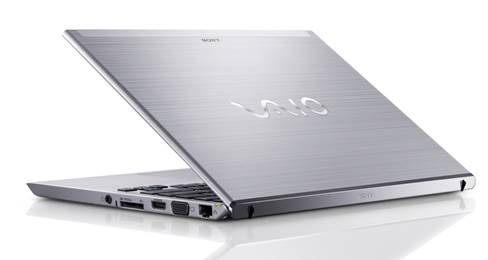Acer Aspire S7
Acer crams a touchscreen into a
beautiful Ultrabook, but at this price we expect better
Price: $1,263
Ratings: 4/6
Supplier: www.dabs.com

Acer
has matched the Aspire S7’s looks with a superb display
While Asus’ VivoBooks and Sony’s VAIO T
Series occupy the mid-range, Acer’s latest has its sights set firmly on the
aspirational end of the market, with a price pegged at over $1,500.
At 1.27kg, the Acer is a mite heavier than
the lightest 13in Ultrabooks, but it’s a mere 12mm thick and matches all-comers
for rigidity. The metal unibody base resists the most violent of twisting
motions, and the lid is sturdier than it looks. It’s a real beauty, too, with a
gloss-white, Gorilla Glass lid and sparkling, textured metal surrounding the
keyboard. The 13.3in display gets its own layer of Gorilla Glass to keep it
safe from harm.
Acer has matched the Aspire S7’s looks with
a superb display. The glossy panel delivers lurid, saturated colours and enough
contrast to make images look almost three-dimensional. As a touchscreen, the
panel is delightfully responsive, and Acer has spread the weight in the base so
it takes a firm prod to tip the laptop backwards. The only weakness is backlight
leakage, visible around the panel’s edges.

The
only weakness is backlight leakage, visible around the panel’s edges
The Core i5 CPU and 4GB of RAM are nothing
out of the ordinary, but the twin 128GB SSDs combined in a RAID0 array
certainly are, and deliver startling file transfer speeds. We recorded
sequential reads of 703MB/sec, more than 200MB/sec quicker than its rivals. The
Acer achieved a respectable 0.62 in our Real World Benchmarks, and it did well
in our battery benchmarks, with a light-use runtime of 6hrs 45mins.
Ergonomically, it’s much less successful.
The keyboard layout is awkward, with no dedicated function keys, and there’s
barely any travel; the keys feel lifeless. The touchpad is rattly, and a slight
lip around the edge causes problems with Windows 8’s edge-swipe gestures.
By the standards of its Ultrabook peers,
the Acer is hardly overpriced. Yet, for all its charms, we’re not convinced. We
have high expectations of a laptop at this price, and although the looks and
panel pass muster, the ergonomics simply aren’t good enough.
Sony VAIO T13
Not an entirely successful
transformation for Sony’s cut-price Ultrabook
Price: $1,015
Ratings: 4/6

Sony’s
first T13 Ultrabook was the first to dip below $1,500
Sony’s first T13 Ultrabook was the first to
dip below $1,535. Now the firm has added a touchscreen and 128GB SSD but has
managed to keep the price remarkably low.
It doesn’t have the wow factor of the
priciest Ultrabooks, but the VAIO T13 is still smart. The brushed-metal lid
conceals a 13.3in touchscreen, and while it’s heavier than average at 1.59kg,
it’s pleasingly slim at a mere 20mm. Build quality puts it behind Asus’ cheaper
VivoBook S400E, though, with noticeably more give in its base and a little
creak in the lid.
Ergonomically, the Sony gets it largely
right. The touchscreen works well, and while the Scrabble-tile keys have barely
any travel, the light, springy action makes for pleasant typing. The wide
button less touchpad isn’t bad for basic cursor control, but pinch-zooming
proved jerky and often required several attempts before it recognized Windows
8’s edge- swipe gestures.

In
isolation, the Sony VAIO T13 is an unfussy touchscreen Ultrabook for sensible
money
Since we reviewed the non-touch VAIO T13,
Sony has taken the time to add Ivy Bridge CPUs. Our model came equipped with
the mid-range Core i5-3317U and 4GB of RAM, plus a 128GB Adata SSD. It’s a
partnership that, thanks to the lower-resolution 1,366 x 768 display, edges it
past a few of the more highly specified models on test, with an overall result
of 0.67.
Maintaining the Ultrabook- class dimensions
has taken its toll on stamina, however. The 4,050mAh battery ran dry after 5hrs
18mins, well short of the best machines on test.
Image quality is below par, too. The
measured brightness of 200cd/m2 is barely acceptable, and both color
accuracy and the measured contrast ratio of 181:1 are the worst on test. To the
eye, this display delivers washed-out colors and crushed shadow detail in dark
scenes. It’s far from ideal at this price.
In isolation, the Sony VAIO T13 is an
unfussy touchscreen Ultrabook for sensible money. But with Asus’ VivoBook S400E
providing similar performance for less cash, we know where we’d spend our
money.